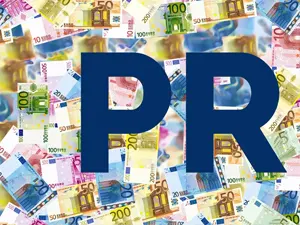
Public Relations – a definition
I. Introduction to PR
PR, short for Public Relations, is a strategic communication process that builds mutually beneficial relationships between organizations and their public. It’s all about maintaining a positive image and creating strong relationships with the audience. Companies use it to communicate, gain exposure, and build a positive reputation. PR can cover various activities such as handling media queries, crisis management, and corporate communications. It’s a key tool in promoting brand image and fostering goodwill. In a nutshell, PR is an essential aspect of any business strategy. Whether you’re a small startup or a multinational corporation, effective PR can make a significant difference to your success.
In short: PR is on the rise
II. Definition of PR
The German communications expert Carl Hundhausen defined PR like this:
“Public relations is the art of enhancing public opinion for your company, product or service using the spoken or printed word, by actions or visible symbols.”
III. Importance of PR in business
Public Relations (PR) plays a pivotal role in the success of businesses across industries. It serves as a strategic communication tool that helps companies cultivate and maintain a positive public image. Through effective PR, businesses can build strong relationships with their target audience, customers, investors, and other stakeholders.
By managing media relations, handling crises, and crafting compelling stories, PR professionals can shape the narrative surrounding the brand, boosting credibility and trust. PR also enhances brand visibility, leading to increased brand awareness and potential business growth. In the competitive modern business landscape, a well-executed PR strategy is indispensable for fostering a favorable reputation, driving customer loyalty, and ultimately achieving long-term success.
IV. Components of PR
- Media Relations: This involves creating and maintaining a positive relationship with the media, ensuring your organization is portrayed favorably.
- Event Management: PR professionals often organize events to increase brand visibility and engagement.
- Crisis Communications: When things go wrong, PR teams work to manage the situation and preserve the organization’s reputation.
- Social Media: In today’s digital age, managing an organization’s online presence is a key part of PR.
- Content Creation: PR teams often create content like press releases, articles, and blogs to promote the organization.
- Stakeholder Relations: This involves managing relationships with everyone who has an interest in the organization, from employees to investors.
V. Benefits of PR compared to Advertising
PR, or Public Relations, offers several advantages over traditional advertising. One key benefit is credibility. With PR, you’re not just telling people how great your product or service is, you’re showing them. This often comes in the form of third-party endorsements like press releases, reviews, and social media shout-outs.
Another advantage is cost-effectiveness. Unlike advertising, you’re not paying for space or airtime. Instead, you’re leveraging relationships and creating compelling stories to earn media attention.
Lastly, PR allows for better targeting. You can tailor your message to reach specific audiences, making your efforts more efficient and impactful. Whether you’re a startup or an established company, PR can offer a significant return on investment.
Advertorials and native advertising
Advertorials or native advertising are a hybrid between PR and advertising. This involves placing a publication in the editorial area and paying for it, as done with advertising. Such publications are often referred to as “sponsored posts” in the online sector. In print media, words like “advertisement” or “special publication” come up a lot.
The (added) value of PR: Advertising Value Equivalency (AVE)
In any case, journalistic reporting is more credible than any advertisement. The AVE (Advertising Value Equivalency) often refers to the ratio of 1:3. This means that if an unpaid PR publication is compared with an advertisement for equal size, the value of which is, for example, 5,000 EUR, the PR publication has a value of 15,000 EUR.
Compliance of Public Relations
Transparency, fairness, integrity, and legality should be part of the basic understanding of PR counselors. They have a special responsibility towards the public.
VI. Examples of PR strategies
This is an example of a PR strategy for a “Honey Customer”:
Honey Tasting Event: Organize an event where people can taste different types of honey and learn about their benefits. Invite food bloggers, health influencers, and media representatives to attend and share their experiences on social media.
Collaboration with Local Chefs and Restaurants: Partner with local chefs and restaurants to create special menu items featuring honey as a key ingredient. Promote the collaboration on social media and through press releases.
Social Media Campaign: Launch a social media campaign centered around the theme of “The Power of Honey”. Utilize captivating visuals, user-generated content, and educational posts to highlight the benefits of honey.
Educational Content: Create and publish articles, blog posts, and infographics that educate people about the health advantages of honey. Use targeted keywords and hashtags to increase visibility and reach a wider audience.
Engage with Health and Wellness Influencers: Reach out to health and wellness influencers on social media and offer them samples of different honey types to try. Encourage them to share their experience and review the product with their followers.
Participation in Trade Shows: Attend health and wellness trade shows to showcase the benefits of honey. Offer free samples, distribute promotional material, and network with other industry professionals.
Sponsorship of a Sports Team: Sponsor a local sports team and provide them with various honey products to promote its benefits for athletes. Leverage this partnership to gain media coverage and enhance brand awareness.
By focusing on “Honey Customer” without specifying the type of honey, the campaign can highlight the versatility and benefits of different honey varieties, including the one intended to be promoted.
Press Releases: Regularly issue press releases to announce new product launches, partnerships, and any significant developments related to the “Honey Customer” campaign. Distribute these press releases to relevant media outlets, both online and offline.
Media Interviews: Offer interviews to key spokespeople or experts associated with the “Honey Customer” campaign. These interviews can focus on the health benefits of honey, the importance of quality honey products, and the campaign’s objectives. Target health and lifestyle magazines, newspapers, and online publications.
Guest Articles: Write guest articles for popular health and wellness blogs or magazines, showcasing the benefits of honey and its various uses. Position “Honey Customer” as a versatile and healthy option in the culinary and wellness industries.
Media Tours: Organize media tours or virtual events where journalists and bloggers can visit honey production facilities, learn about the sourcing and production process, and participate in honey tastings. This provides an opportunity for journalists to create engaging stories around “Honey Customer”.
Influencer Partnerships: Collaborate with health and wellness influencers who have a significant following and align with the target audience. Give them honey samples and encourage them to write about health benefits of honey.
Influencer Takeovers: Have influencers take over the “Honey Customer” campaign’s social media accounts for a day. During the takeover, they can share their experiences, recipes, and creative ways to use honey in daily life.
Giveaways and Contests: Host giveaways and contests in partnership with influencers to create buzz around “Honey Customer”. Encourage their followers to participate by sharing their favorite honey recipes or wellness stories related to honey.
Live Events with Influencers: Organize live events or webinars with influencers as guest speakers, focusing on topics related to honey’s health benefits, skincare uses, and culinary applications. These events can be hosted on social media platforms or through dedicated webinars.
Influencer Meetups: Arrange meetups or virtual gatherings with influencers and brand representatives to foster stronger relationships. This can lead to long-term partnerships and continued advocacy for “Honey Customer”.
By incorporating ongoing press activities and influencer engagement into the campaign, “Honey Customer” can gain continuous visibility, credibility, and endorsement from influential voices in the health and wellness community.
VII. PR in the digital age
In the digital age, PR, or Public Relations, has evolved significantly. It’s no longer confined to traditional media; digital platforms are now key. PR in the digital age means creating and managing your online reputation. It involves using social media, blogs, and online news outlets to communicate with your audience. It’s about building relationships, promoting your brand, and managing crises online. PR professionals need to be savvy with digital trends, SEO, and content marketing. They need to understand their audience’s online behavior to effectively engage with them. So, PR in the digital age is a blend of traditional strategies and innovative digital techniques.
VII. Conclusion and final thoughts on PR
The PRSA states:
“In conclusion, PR, or Public Relations, is a strategic communication process that builds mutually beneficial relationships between organizations and their public.”
This encompasses everything from media relations, crisis management, to social media strategies. It’s about managing perception and creating a positive image. PR professionals work tirelessly behind the scenes to ensure their company or client is seen in the best light. The impact of effective PR can’t be overstated – it can shape public opinion, enhance reputation, and even influence sales. So, whether you’re a big corporation or a small start-up, investing in PR is a smart move for your business. But don’t forget: As everything in life, to achieve good and finally award-winning PR needs the readiness for an on-going life-long learning process.
You want to use the advantages of PR in Germany for your products and/or your company?
We will find the right solution.
Contact us now!
… and how much does PR cost?





2 Comments
These tips are so good for work, and coming from such good marketers, we need to learn and implement them.
PR has been an essential part of the business for many years. As your brand is in everyone’s mouth, it only benefits your brand. Do you think advertising can create the same impact as PR?